MARKET OVERVIEW
The global incontinence devices market develops from its very nature to explore a most common yet largely neglected medical condition all over the world- incontinence. The market provides devices that treat and manage urinary and faecal incontinence, enabling patients to live dignified lives. Older populations, chronic illnesses, and surgeries are increasingly being regarded as contributory to increasing numbers of people subject to these conditions. Hence the demand for novel and effective solutions has been a steady focus in the healthcare markets.
Geographically, the Global Incontinence Devices market covers North America, Europe, Asia-Pacific, Latin America, and the Middle East and Africa. A careful assessment of these regions takes into account their health status, population demographics, and awareness of incontinence management. It can be expected that developed areas shall mostly continue to remain the front-runners because of advanced medical facilities and high expenditure on health care, while emerging regions will favor acceptance due to the easier access to health care and improved patient awareness.
Another avenue that opens with the incontinence devices market is the forum of healthcare policy, insurance coverage, and caregiver support systems since these devices need to be incorporated into the basic health packages. Increased demand for incontinence management will force the governments and private insurers to cover these basic devices, thereby widening their accessibility to a large population. In parallel, educational programs will foster awareness of early diagnosis and effective management, thus minimizing the social stigma attached to incontinence.
In the future, the market evolution will most heavily draw upon collaborations between medtech manufacturers, care providers, and regulators. Hence, quality assurance and safety assurance of the products, as well as the promotion of cost-effective solutions, form the bedrock of the market development. In tandem, a much stronger focus will be placed on patient-centered design and personalization in treatment to ensure patients receive the care that truly meets their needs.
The Global Incontinence Devices market is set up to change the course of contemporary healthcare by providing such solutions that a condition impacting millions around the world would deem important. This view that is also advancing and providing recognition to relevance for its management in the increasing population will, therefore, enlarge the industry influence in developing newer, accessible, patient-centered devices for improved health outcomes.
Global Incontinence Devices market is estimated to reach $20,331.68 Million by 2032; growing at a CAGR of 5.6% from 2025 to 2032.
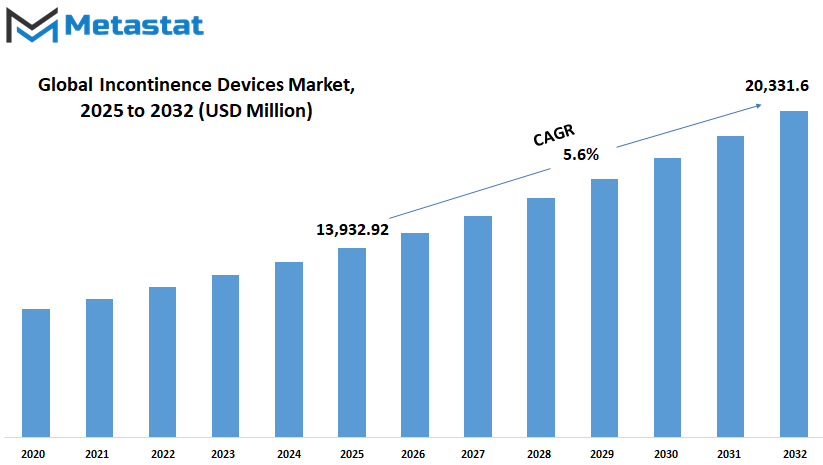
GROWTH FACTORS
The Global Incontinence Devices market is poised for healthy growth in the impending years, a number of factors such as medical, demographic, and technological advancement have been combined to increase the demand for effective management solutions in this field. The global population will age by the year 2020, and as the population ages, the demand for these devices will further rise in terms of supply. The health issues that older people often experience, such as reduced mobility, are related to incontinence. Hence, truly effective devices need to be reliable and comfortable.
Thus emerges an easily profitable need for the burgeoning market of incontinence devices, where most people look for effective, uncomplicated ways to manage health and quality of life. The increasing number of people being diagnosed with these ailments is putting pressure on the production of appropriate devices. This is yet another area that needs to be developed to have sophisticated devices on the market that offer improved control and comfort for patients.
However, some factors can inhibit the growth of the market. One of such major barriers would be the social stigma surrounding incontinence. Most of the people will not seek any form of intervention or even avail of products related to it owing to feeling embarrassed or not knowing what is available. Thus, this prevents a few people from profiting from many innovations in this field. Proper awareness programs on incontinence management can help break barriers towards acceptance of products related to it.
Apart from these factors, advanced incontinence devices are also a challenge. Although these advanced devices are meant to provide the best in comfort as well as efficiency, the cost of these devices makes them out of the reach of a large part of the population. One will have to keep an eye on whether these innovative devices are made available at reasonable prices to reach out to as many users as possible.
Evidently, the market would continue to grow alongside the evolution in technology. The innovative wearables and intelligent incontinence products are changing the landscape of individually managed health. Comfort-enhanced, greater efficiency and advanced monitoring capabilities of such devices keep the users on track without an overwhelming care experience. Research and development are still on their course, promising additional cutting-edge solutions in turn.
The Global Incontinence Devices future shapes great promises with the continued development of healthcare needs and breakthroughs in technology. Challenges must be addressed today, while opportunities for growth can remain alive in an ever-adapting marketplace that strives to meet the needs of individuals around the world with better and more affordable ways to manage incontinence.
MARKET SEGMENTATION
By Type
The global market for incontinence devices is expected to undergo substantive growth in the next few years, on the back of medical technology developments, coupled with awareness of health and wellness. With the increase in the elderly population and subsequent rise in the prevalence of incontinence, the demand for effective and comfortable solutions will be even more pronounced. This market has been divided into various types of devices meant to address varied needs and conditions-obviously, such as urinary catheters, vaginal slings, electrical stimulation devices, artificial urinary sphincters, urethral inserts, and pessary devices. Each of these products aims at a particular condition tailored for patient requirements so that there is a better quality of life.
The urinary catheters are some of the widely used devices available for treating bladder control problems. These instruments work by interrupting the flow of urine from the bladder into a vessel unable to make a natural interruption, from where such discharging would be directed away even without personal intervention by the patient thus ensuring all the benefits while protecting him from other life-threatening complications like infections. Innovations in catheter technology will probably aim to enhance patient comfort, reduce infection risks and increase ease of use. In view of the increasing demand, catheters of advanced materials and designs would be put into use that would cope more favorably with the specific requisites of different patients.
Vaginal slings represent yet another highly pertinent subset available in the present market. These devices support the urethra and guard against involuntary leakage, especially in cases of stress urinary incontinence. The future of vaginal slings depends on further advancements in minimally invasive techniques for implant insertion and biocompatible implants that ensure long-term effectiveness with minimal side effects. Greater surgical precision and, perhaps more important, enhanced patient education should lead to a broader acceptance of these devices in the future.
Electrical stimulation devices represent a non-invasive means of alternating incontinence through selective stimulation that strengthens pelvic floor muscles. This is a method worthy of consideration for patients who are looking for alternatives to surgical treatment or long-term medication. The future will see more user-friendly devices due to advancements in wearable technology and wireless connectivity.
Very severe cases of incontinence that haven't responded to other measures will benefit from the artificial urinary sphincters. They act like a natural sphincter, controlling the flow of urine precisely. Future advancements are focusing on increasing longevity and minimizing the risk of device failure, besides improving the implantation of these systems.
Covered above, urethral inserts and pessaries are very important for the management of incontinence. Urethral inserts work temporarily by blocking off urine flow, whilst pessaries support the internal structures to prevent leakage. Both devices will presumably advance into more moldable designs and materials for comfort and effectiveness.
As technology continues to evolve and healthcare priorities shift more toward the patient, it will allow for yet greater expansion for the global incontinence devices market. Devices will then be made even better with increased investment in research and development while making them easier to use and available to meet individual needs, thus enhancing the lives of millions around the world.
By Incontinence Type
The Global Incontinence Devices market is expected to increase as awareness improves about incontinence along with the development of medical technology. Incontinence, which affects people across an entire age spectrum, translates into profound physical discomfort and emotional distress for the sufferers. As far as the market for its devices key to the management of this condition is concerned, demand for such solutions is increasing-proof of their effectiveness and comfort in use. Innovations coming out are increasingly making these devices medically valid while offering more comfort and efficiency. Ineluctably, as population ages alongside the growing incidences of health issues related to lifestyle, the demand for such devices will increase.
The Global Incontinence Devices market gets segmented on the basis of different types of incontinence that call for specific solutions. Stress urinary incontinence is when urine leaks as physical activity such as coughing, sneezing, or lifting strains the pelvic muscles. Generally, these devices seek to support the bladder and strengthen the muscles associated with this type of incontinence and are likely to develop with better design and improved comfort.
Urge urinary incontinence is the sudden, strong urge to urinate that occurs with accidental leakage thereafter. The devices available for this condition seek to assist the patient with holding back these frequent urges by controlling bladder function. With advancements in technology, better sensors could be utilized along with feedback mechanisms that will provide the patient with better options of managing the condition. Non-invasive methods and wearable devices will likely become the norm, granting consumers considerable flexibility and convenience.
Overflow urinary incontinence occurs when the bladder fails to empty itself completely, resulting in frequent dribbling. In the management of this condition, devices assist in emptying the bladder and preventing problems related to retention. Future devices that would allow accurate remote monitoring by healthcare providers to assess the patients' conditions and regulate the treatment accordingly are perhaps on the horizon.
Mixed urinary incontinence refers to a combination of stress and urge incontinence, thus allowing the requirement of versatile devices that address multiple symptoms. As trends change, a consolidated solution that gives multi-functional support is likely to gain traction. Such devices would possess enhanced adaptability to ensure improved quality of life for the user.
The Global Incontinence Devices market is bound to move in line with innovations and user-oriented designs. Instances of new materials, technologies, and data analyses will create user-friendly and discreet devices. As the awareness of incontinence grows, coupled with gradual erosion of the stigma, more people are likely to seek medical intervention and embrace the devices that will consequently facilitate their growth. The market seems to be heading toward solution designs that allow users to confidently and comfortably take charge of their well-being.
By Patient Type
The Global Incontinence Devices market is projected to witness impressive growth shortly, with the development of medical technology and a growing awareness regarding health and well-being. Incontinence is a health condition disturbing the control of a person over his bladder or bowel movements. Over millions of people across the globe have this challenge. With increasing aging populations and people's desire for effective healthcare solutions, demand for efficient incontinence devices may increase. Innovations in this industry are working toward realizing a better quality of life for patients by providing more comfort, convenience, and dignity.
The demand for incontinence devices is classified according to the type of patients; foremost in the division exist male and female. This distinction is important because causative factors and management of incontinence commonly differ between genders, thus leading to the development of specialized products. Male patients often associate incontinence with conditions involving the prostate, such as enlargement and post-surgical effects. Among other specifics, products designed for men address these concerns, often focusing on external collection systems, male guards, and intermittent catheters. This sector will most likely witness a spur in growth through prostate health conditions and the increasing awareness of treatment options.
Incontinence is something that, for female patients, is often linked with the pregnancy and childbirth experience, as well as menopause, situations that can weaken pelvic floor muscle integrity. Supposedly, incontinence appliances made especially for women should also include absorbent pads, vaginal inserts, and pelvic support devices. As women become more aware and willing to find solutions for incontinence, it is anticipated that the market will expand quite rapidly. Advanced diagnostics would deal with the issue of diagnosis and educate further on women's health challenges, thus providing another boost toward the growth of the market.
Inconvenience Devices are poised to witness an impact from technology in view of advancement in achieving more efficacy and comfort. Such will include the rise of wearable technologies, smart sensors, and non-invasive treatment options. These innovative devices will allow the patient to monitor the condition in real-time and manage it with greater independence. More research and development investments will position a wider range of personalized and effective products, aligning to fulfill the specific needs of male and female patients
An increasing openness to accepting incontinence as a form of medical condition will also further push market growth. Campaigns directed towards eradicating negative social perceptions and enhancing patient education will also encourage more patients to seek treatment. Presently, with improvement in the healthcare systems around the world and wider access to medical devices, this market will, in all likelihood, keep going up.
In the future, the Global Incontinence Devices market will focus on creating solutions that keep patient comfort, efficacy, and ease of use at the forefront. With innovations targeted to the specific needs of male and female patients, this daunting world will change for millions for better quality and greater independence.
By End-Users
It is expected that for this period of time, in the next few years, the worldwide market for incontinence appliances would flourish-up with the increased consciousness concerning problems relating even to incontinence and also developing needs for effective management solutions. With it on a high threshold, as much as millions get to have advanced and comforted means to manage such conditions, they would contribute to a said increase in demand in innumerable healthcare settings. Thus, taking a little forecast into the future on the market, it can be concluded that hospitals, clinics, ambulatory surgical centers, as well as home care settings, will play vital roles in future development.
Hospitals are most likely among the major end-users of incontinence devices, as they provide a complete treatment for the patients and make specializing among doctors available. Well, as technology continues to grow, hospitals would update the newest and better devices that allow patients to experience and optimize care in an even higher quality. Precision and reliability in the case management of incontinence cases in the hospitals will, thus, consider these items, especially when the world is aging and requiring specialized treatments increases.
Clinics are also expected to be the other significant contribution to the market. They're those facilities that would deliver such fast, intimate services to that patient experiencing problems regarding incontinence. Clinics would probably have more modern devices that can enable greater convenience and efficacy in the future, making them enticing to patients who are willing to see a health professional outside of a hospital setting. Access and specialization of clinics shall serve to improve this form of growth in the market.
The ambulatory surgical centers have a prospective role in the adoption of incontinence devices. These types of centers focus on providing same-day surgical care and address the needs of patients seeking minimally invasive therapeutic intervention. The integration of advanced incontinence devices will continue to improve patient outcome and recovery time as more technological innovations surround this field with time. All this makes ambulatory surgical centers a dynamic arm of the health care system in promoting market growth.
Homecare settings anticipate great importance in the future of the world incontinence device market. As the number of patients opting for home care services gains momentum, this will increase the demand for devices easy to use and efficient. Concepts of innovation are designing modern incontinence products that are wearable and discreet for those individuals seeking independence and privacy in managing their conditions. This inclination toward home care encapsulates the growing ideology of a patient-centered mode of health care that emphasizes convenience and comfort.
As the global incontinence devices market is a dynamic one, each end-user segment will foster market growth in its own way. Cooperation between health care providers and device manufacturers will help bring forth advanced options for the patient. The future of this market seems bright, given the constant innovations in medical technology and increasing emphasis on quality care.
|
Forecast Period |
2025-2032 |
|
Market Size in 2025 |
$13,932.92 million |
|
Market Size by 2032 |
$20,331.68 Million |
|
Growth Rate from 2025 to 2032 |
5.6% |
|
Base Year |
2024 |
|
Regions Covered |
North America, Europe, Asia-Pacific, South America, Middle East & Africa |
REGIONAL ANALYSIS
The incontinence devices market on a worldwide level is anticipated to record advances over the next few years, and different regions could also play their individual parts in shaping its growth. Increased awareness among the population, improved healthcare access, and advanced medical technology are some factors that would likely fuel this growth. Each region has its own opportunities as well as challenges with regard to the overall development and adoption of incontinence devices worldwide.
Prominent as very strong markets, North America has: a well-defined healthcare system; and high awareness about incontinence. Moreover, the US should continue to top this demand scale due to the high investment in medical research and a growing tendency to adopt advanced healthcare solutions. Contributing to the growth of this market are Canada and Mexico, with improving healthcare systems and intensified efforts geared towards the management of aging populations and chronic conditions
In Europe, countries like the UK, Germany, France, and Italy are expected to see continuous demand for incontinence devices. The current and beneficial policies regarding healthcare in addition to the focus on patient care and early diagnosis will boost the growth figures in favor of the market. As life expectancy increases across Europe, the end result is an increased need for effective management of incontinence, thus making such devices a core part of elderly care. This may also be true in the rest of Europe, judging by the increased health awareness and better access to medical trunk resources.
Asia-Pacific, by all means, turns out to be one of the most promising regions in terms of the prospects for the global incontinence devices market in the future. Increased urbanization, improved disposable income, and a growing elderly population are major influences behind it. China, India, Japan, and South Korea are some of the nations that invest huge amounts into the modernization of healthcare, which might also help grow the use of such devices. And, awareness campaigns and destigmatization regarding incontinence will play very important parts in promoting the use of medical solutions in this arena.
In South America, Brazil and Argentina are emerging as significant contributors to market growth. Improvements in healthcare accessibility and government initiatives to support elderly care and chronic disease management are expected to boost demand. The rest of South America is likely to follow suit as more countries recognize the importance of providing quality incontinence care.
The Middle East and Africa region presents both challenges and opportunities. Countries like the GCC nations, Egypt, and South Africa are gradually expanding their healthcare sectors, which will likely lead to increased demand for incontinence devices. Efforts to improve medical infrastructure and address the needs of aging populations will support market growth, while ongoing health awareness campaigns could drive further adoption.
As the global incontinence devices market continues to evolve, regional differences in healthcare systems, economic development, and cultural perspectives will shape its future. By addressing these unique factors, the industry can ensure that effective, accessible, and innovative solutions reach those who need them most.
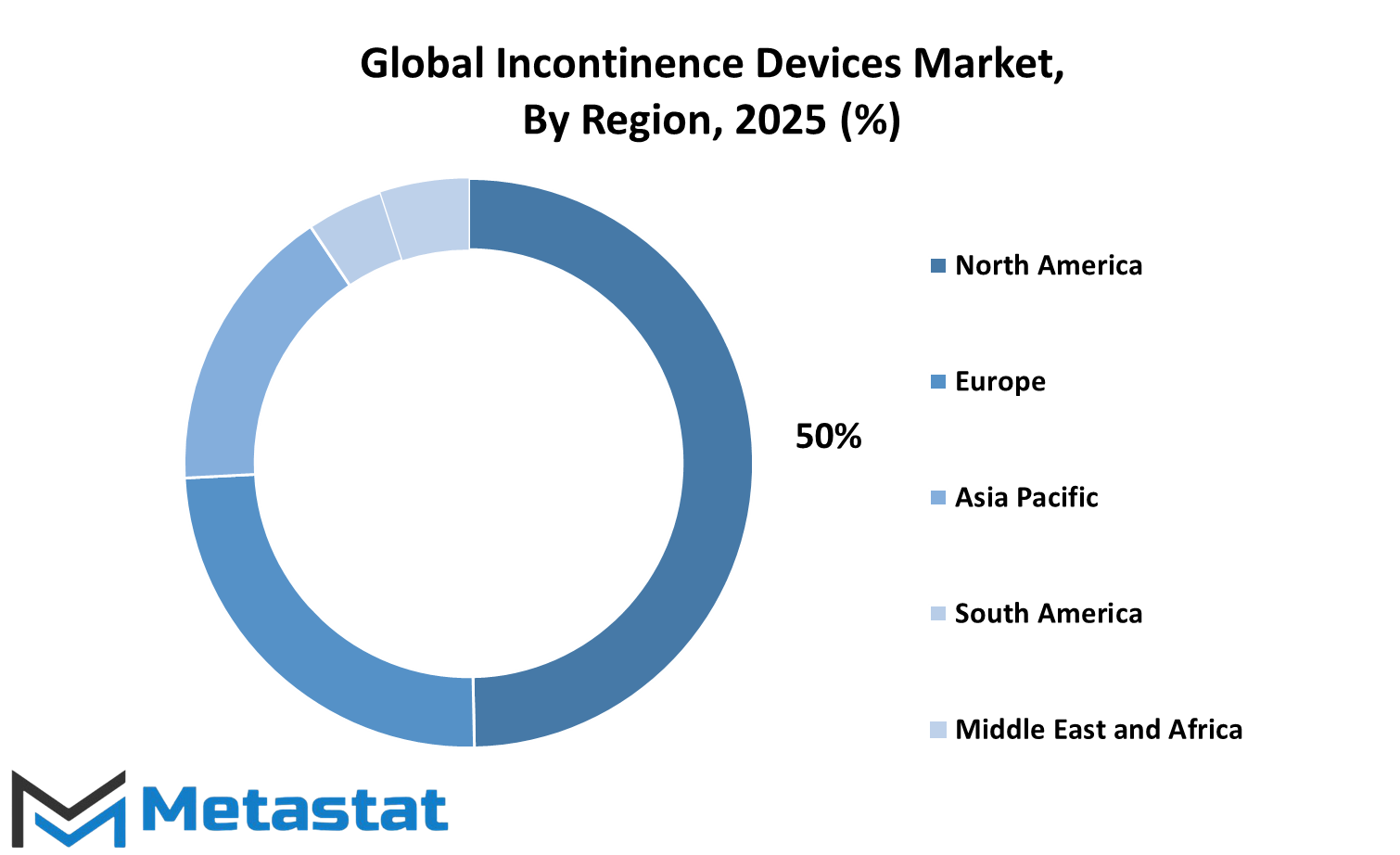
COMPETITIVE PLAYERS
The Global Incontinence Devices market is expected to grow significantly in the coming years, driven by increasing awareness about incontinence-related health issues and the development of innovative medical technologies. This market includes a variety of devices designed to manage and treat incontinence, providing patients with comfort and improving their quality of life. As the demand for these devices rises, competition among key players continues to shape the industry’s future.
Several well-established companies play a crucial role in driving advancements and meeting the needs of individuals affected by incontinence. Coloplast A/S, for instance, is known for its dedication to creating high-quality healthcare products tailored to the specific needs of users. Their focus on innovation and user-friendly designs has made them a leading force in this market. Similarly, Essity AB has built a strong reputation by offering a wide range of hygiene and health solutions, often combining sustainability with performance to cater to growing global demands.
Braun Melsungen AG is another major player bringing advanced medical technology and patient care products to the forefront. Their commitment to research and development keeps them at the cutting edge of the industry. Boston Scientific Corporation is widely recognized for its expertise in medical devices and continues to expand its incontinence solutions with a focus on precision and effectiveness. Becton, Dickinson and Company, which includes C.R. Bard Inc., has long been a trusted name in healthcare, offering reliable and innovative incontinence management products.
ConvaTec Group plc stands out for its focus on providing high-quality wound care and continence products, often emphasizing patient comfort and ease of use. Hollister Incorporated has built its reputation by delivering consistent performance in the incontinence care segment, with a strong emphasis on improving daily life for those who use their products. Teleflex Incorporated contributes with its range of high-performance medical technologies, ensuring patients receive effective and safe care.
Johnson & Johnson remains a global powerhouse in healthcare, and their efforts in the incontinence devices market reflect their broader commitment to patient well-being and innovation. Cook Medical Inc. brings specialized expertise, often offering tailored solutions for complex medical needs, which includes incontinence management.
As the Global Incontinence Devices market continues to evolve, competition among these players will likely drive further advancements. By investing in research, enhancing product quality, and responding to patient needs, these companies will shape the future of incontinence care. Their efforts will not only improve treatment options but also support a more comfortable and dignified life for individuals worldwide.
Incontinence Devices Market Key Segments:
By Type
- Urinary Catheters
- Vaginal Slings
- Electrical Stimulation Devices
- Artificial Urinary Sphincters
- Urethral Inserts
- Pessary
By Incontinence Type
- Stress Urinary Incontinence
- Urge Urinary Incontinence
- Overflow Urinary Incontinence
- Mixed Urinary Incontinence
By Patient Type
- Male
- Female
By End-Users
- Hospitals
- Clinics
- Ambulatory Surgical Centers
- Home Care Settings
Key Global Incontinence Devices Industry Players
- Coloplast A/S
- Essity AB
- B. Braun Melsungen AG
- Boston Scientific Corporation
- Becton, Dickinson and Company (C.R. Bard Inc.)
- ConvaTec Group plc
- Hollister Incorporated
- Teleflex Incorporated
- Johnson & Johnson
- Cook Medical Inc.
WHAT REPORT PROVIDES
- Full in-depth analysis of the parent Industry
- Important changes in market and its dynamics
- Segmentation details of the market
- Former, on-going, and projected market analysis in terms of volume and value
- Assessment of niche industry developments
- Market share analysis
- Key strategies of major players
- Emerging segments and regional growth potential



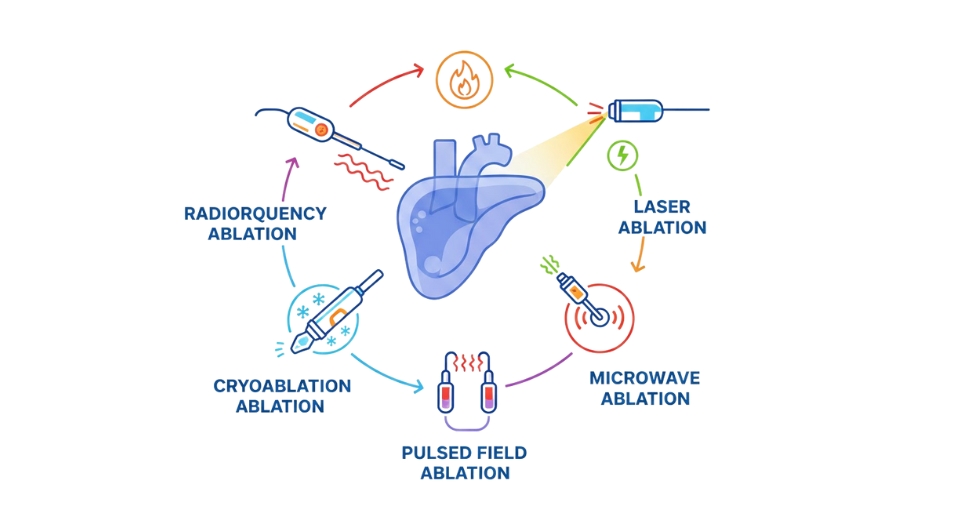

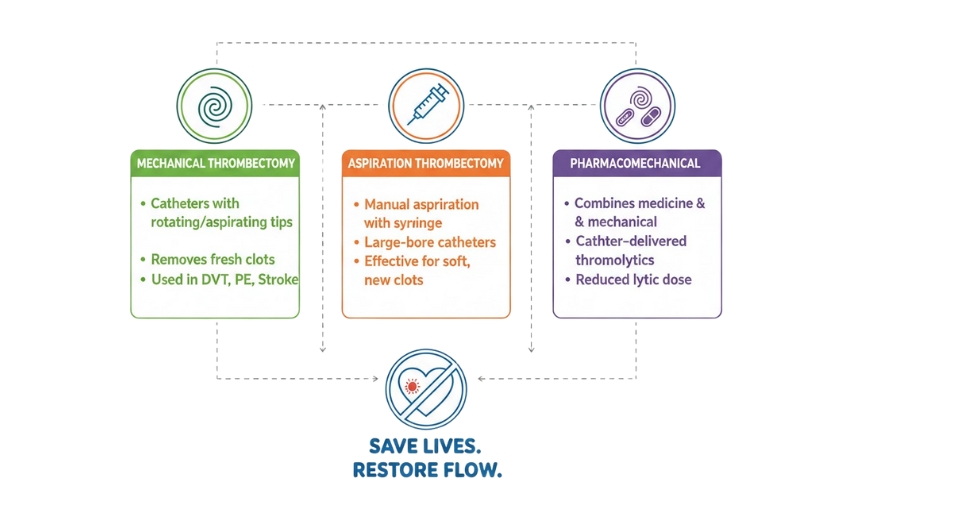
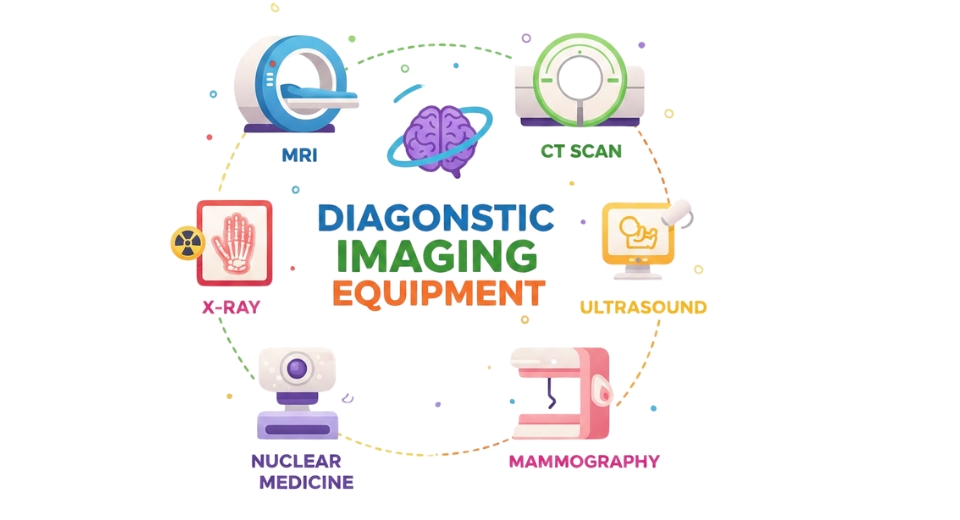

 US: +1 3023308252
US: +1 3023308252






